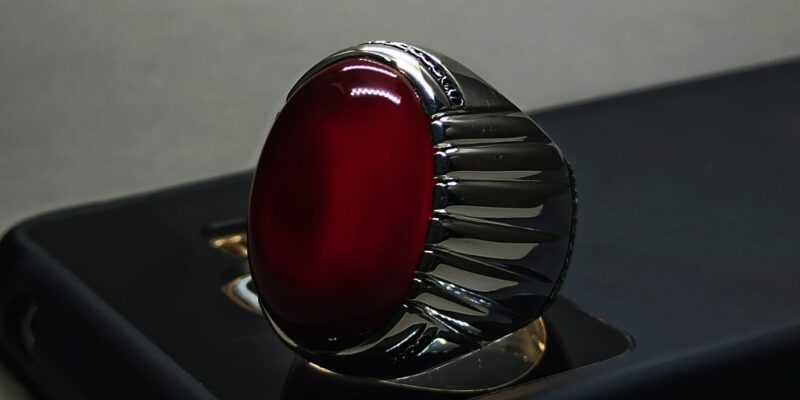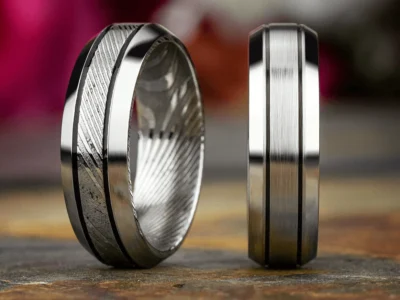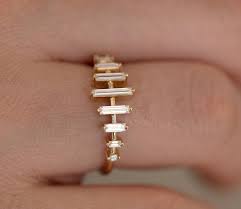Carnelian, a captivating gemstone widely used in the jewelry and gemstone industry, often exhibits black spots. This article explores the formation process of carnelian, the causes of black spots, and how they can impact its authenticity and quality.
Table of Contents
Importance of Carnelian in jewelry and gemstone industry
Carnelian holds great significance in the jewelry and gemstone industry due to its vibrant orange-red color and its ability to be shaped into exquisite beads, cabochons, and carvings. Its beauty and versatility make it a popular choice for creating stunning jewelry pieces.
The phenomenon of black spots in Carnelian
The phenomenon of black spots in Carnelian occurs due to the presence of mineral inclusions during the stone’s formation process. These inclusions can vary in size and color, resulting in the characteristic black spots that can be seen in Carnelian.
Formation of Carnelian
Carnelian is formed through a combination of volcanic activity and ancient sedimentary processes. During its formation, silica-rich fluids infiltrate porous rocks and deposit layers of chalcedony, resulting in the vibrant orange to reddish-brown color of Carnelian.
Overview of Carnelian’s formation process
Carnelian is formed through a combination of volcanic activity and ancient sedimentary processes. Silica-rich fluids infiltrate porous rocks and deposit layers of chalcedony, resulting in the vibrant orange to reddish-brown color of Carnelian.
Read Also: Moissaniteco vs Forever One
Factors affecting the presence of black spots in Carnelian
The presence of black spots in Carnelian can be influenced by various factors, including the concentration and distribution of mineral inclusions, the intensity and duration of heat treatment, and the overall quality of the gemstone.
Mineral Inclusions
Mineral inclusions refer to the presence of other minerals within the structure of Carnelian. These inclusions can vary in size, shape, and color, and can contribute to the formation of black spots in the gemstone.
Explanation of the mineral inclusions causing black spots in Carnelian
Mineral inclusions in Carnelian occur when other minerals become trapped within the gemstone during its formation process. These inclusions can include hematite, iron oxides, and other impurities, which contribute to the appearance of black spots in the gemstone.
Types of minerals commonly found in Carnelian with black spots
Minerals commonly found in Carnelian with black spots include hematite, iron oxides, and other impurities. These inclusions contribute to the unique appearance and character of the gemstone.
Heat Treatment
Heat treatment is a common practice in enhancing the color and clarity of Carnelian gemstones. It involves heating the stone to high temperatures to improve its appearance. However, this process can also impact the presence of black spots in the gemstone.
Understanding the heat treatment process for Carnelian
The heat treatment process for Carnelian involves subjecting the gemstone to high temperatures to enhance its color and clarity. This process can help reduce the appearance of black spots in the gemstone.
Impact of heat treatment on the appearance of black spots
Heat treatment can significantly reduce the appearance of black spots in Carnelian. The high temperatures involved in the process help to enhance the gemstone’s color and clarity, minimizing the visibility of these imperfections.
Authenticity and Quality
Distinguishing between natural and treated Carnelian can be challenging, but examining the gemstone for uniform color, consistency, and clarity can help determine its authenticity. When purchasing Carnelian, look for stones with minimal black spots and a vibrant, translucent appearance for higher quality.
Distinguishing between natural and treated Carnelian
When distinguishing between natural and treated Carnelian, it is important to consider factors such as color consistency, clarity, and the presence of black spots.
Natural Carnelian typically has a more uniform and vibrant appearance, while treated stones may exhibit signs of enhancement or color alteration. Furthermore, natural Carnelian often has a translucent quality, while treated stones might have a more opaque appearance.
Quality factors to consider when purchasing Carnelian with minimal black spots
When purchasing Carnelian with minimal black spots, it is important to consider factors such as color consistency, clarity, and overall appearance.
Look for stones that have a vibrant and uniform color, without any visible black spots or blemishes. Additionally, ensure that the Carnelian has a translucent quality, indicating its natural authenticity. By considering these factors, you can find high-quality Carnelian with minimal black spots for your jewelry pieces.
Conclusion
In conclusion, black spots in Carnelian can be caused by mineral inclusions and the heat treatment process. When purchasing Carnelian, consider color consistency, clarity, and overall appearance for high-quality stones with minimal black spots. Take proper care of your Carnelian jewelry to maintain its beauty and longevity.
Tips for maintaining and caring for Carnelian jewelry
To maintain and care for Carnelian jewelry:
- Clean gently with a soft cloth and mild soap
- Avoid exposure to direct sunlight and extreme temperatures
- Store separately to prevent scratching
- Remove jewelry before swimming or using harsh chemicals
- Recharge the stone by placing it in the sun or moonlight periodically.







Comments